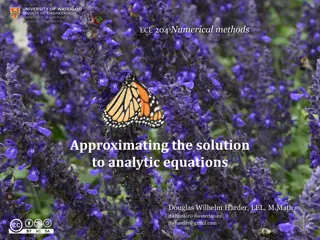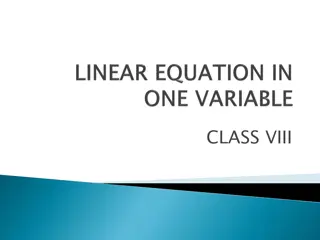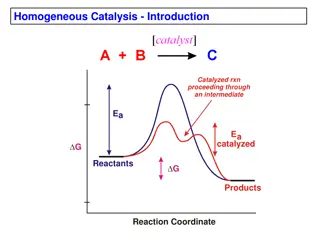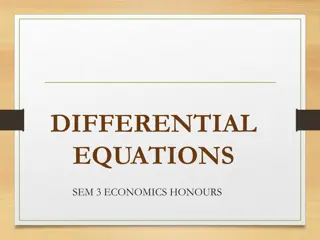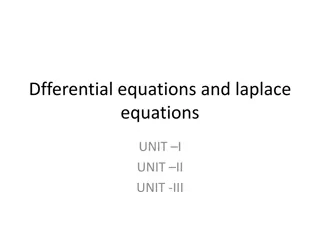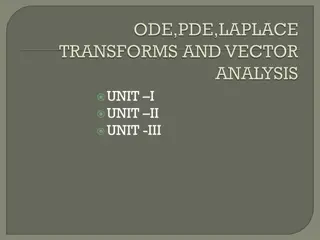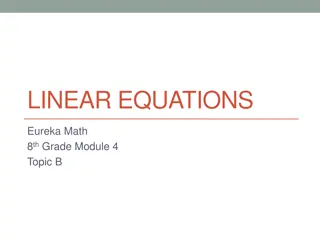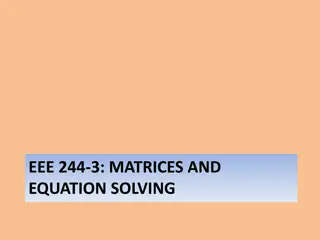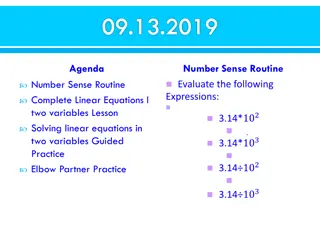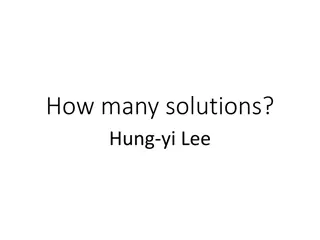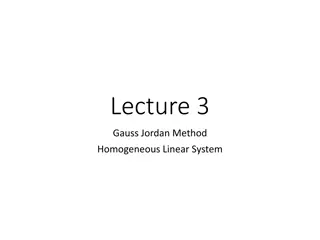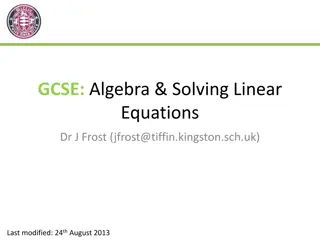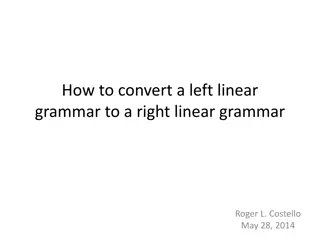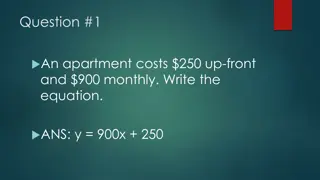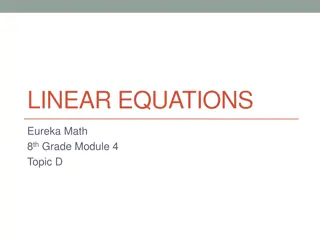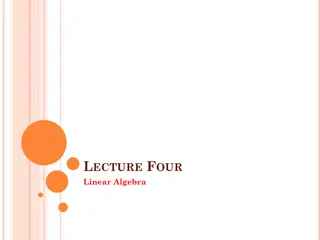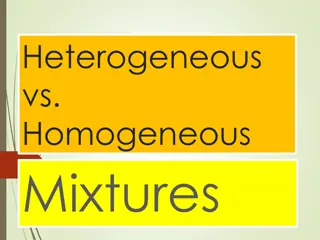Homogeneous Systems of Linear Equations
Homogeneous linear equations consist of a system where the constant terms in every equation are 0. They can have one or infinitely many solutions, with at least one solution always present. Learn how to solve these systems, distinguish trivial and nontrivial solutions, and explore the concepts of null space, nullity of a matrix, and Sylvester's Law of Nullity in mathematics.
Download Presentation

Please find below an Image/Link to download the presentation.
The content on the website is provided AS IS for your information and personal use only. It may not be sold, licensed, or shared on other websites without obtaining consent from the author.If you encounter any issues during the download, it is possible that the publisher has removed the file from their server.
You are allowed to download the files provided on this website for personal or commercial use, subject to the condition that they are used lawfully. All files are the property of their respective owners.
The content on the website is provided AS IS for your information and personal use only. It may not be sold, licensed, or shared on other websites without obtaining consent from the author.
E N D
Presentation Transcript
LINAR EQUATIONS Chapter 4
HOMOGENEOUS LINEAR EQUATIONS In the homogeneous system of linear equations, the constant term in every equation is equal to 0. i.e., no equation in such systems has a constant term in it. A homogeneous linear system may have one or infinitely many solutions. But it has at least one solution always. Let us learn how to find solve the homogeneous system of linear equations and let us see what is meant by trivial and nontrivial solutions.
What is a Homogeneous System of Linear Equations? A homogeneous system of linear equations is a linear system of equations in which there are no constant terms. i.e., a homogeneous linear system is of the form: a x + a x + ... + a x = 0 a x + a x + ... + a x = 0 .... a x + a x + ... + a x = 0 This is a system in 'n' unknowns (x , x , ..., x ), and in each equation, the constant term is 0. When we solve these systems using matrices (by writing augmented matrix), there is no change in the last column (that is made up of zeros) though when row operations are applied. Thus, when solving a homogeneous system of linear equations, we often ignore the column of zeros in the augmented matrix and we only write the coefficient matrix. Here are some examples: 2x - 3y = 0 x - y = 0 is a homogeneous system in two variables.
NULL SPACE AND NULLITY OF A MATRIX Recall that a system is homogeneous if it is of the form Ax = 0. The solution set here goes by the name the null space of A, or N(A). We can speed up the row operations a little if we notice that when doing row operations on [A| 0] the last column never changes. We can do operation just on A, as long as we remember when converting rows back to equations to put zeros = 0 on the right.
SYLVESTER'S LAW OF NULLITY In mathematics, a Sylvester domain, named after James Joseph Sylvester by Dicks & Sontag (1978), is a ring in which Sylvester's law of nullity holds. This means that if A is an m by n matrix and B an n by s matrix over R, then (AB) (A) + (B) n where is the inner rank of a matrix.
The inner rank of an m by n matrix is the smallest integer r such that the matrix is a product of an m by r matrix and an r by n matrix. Sylvester (1884) showed that fields satisfy Sylvester's law of nullity and are therefore Sylvester domains.
NON HOMOGENEOUS LINEAR EQUATIONS A non-homogeneous system of linear equations is any system where at least one linear equation is non- homogenous This corresponds to the question of any linear combination of vectors equaling a non-zero target vector If any one entry of the target vector is not zero, the corresponding system of linear equations is a non- homogenous system


